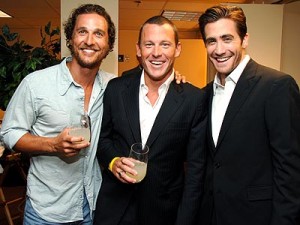REDEMPTION FOUR: BETTER THAN EVER OR BETTER OFF DEAD?
In this mini-series the saga of redemption, as frequently manifested in the form of “comebacks,” is investigated. REDEMPTION ONE is here. REDEMPTION TWO is here. REDEMPTION THREE is probably around, too.
This is the last redemption.
II. EMPIRICAL EVIDENCE
c. How it Should Be: Identities Dismantled, Redemption In Transition
The projection of specific moments of the lives of public people following their death results in redemption of a dubious ethical nature. A drastically similar technique, however, can be utilized to facilitate winning the popular support for the redemption-seekers who possess the social acumen to manipulate their experiences. The most insightful public individuals are capable to redeploy the past to “manipulate” the present and pragmatize their intended vision. When predicting how the audience will interpret a series of events, public figures can act accordingly to enter the public consciousness. Once such an immersion becomes possible, the public person can determine how to use it efficiently.
LANCE ARMSTRONG
The most challenging occurrences of public people’s demise appear when their public personas are perceived as an honest extension of his/herself and they act in a way that jeopardizes both their professional and private life. Lance Armstrong’s documented steroid use offers an illustrious example. Armstrong’s professional career lost its significance the moment his distinctions and awards were taken back. Armstrong’s nebulous actions as an athlete led to a discourse on the morality of his philanthropic work and the LIVESTRONG initiative. In such multifaceted cases, the redemption of an individual is most likely to stem from the segmentation of a public person’s identities in the many distinct roles of their private lives and the distinct roles of their public presence. The individual is then responsible to navigate the best means to move towards the optimal level possible, using either sphere to move further ahead as a public person. This process is similar to the crafting of a reputational mosaic that highlights the positive, without hiding the negative.
In what appears to be a part of the distant past, public individuals held the power to control the simulations the media projected. Following events that posed a reputational risk, “damage control” functioned as a means to sugarcoat a harsher reality in the lives of public people.The field of public relations serves an anachronistic idea of how to control a positive public perception, as an endeavor to create a perfect image is no longer the best route to gaining the support of hoi polloi. The most resourceful public image is one that will be largely viewed as authentic.
Naturally, even this “authenticity” may be of a somewhat contrived or smoothly manipulated composition. For instance, the redemptional strength of the Weiner narrative lies upon the way Weiner and Abedin are presenting their private life to the public. The truth is that we–as the audience–do not know what is going on in their private lives, or if they are sharing a bedroom. What if the personal and the public do not align, in Weiner’s reality? He wouldn’t be the first politician to create a bricolage of his private life to ameliorate his public image. READ MORE >


